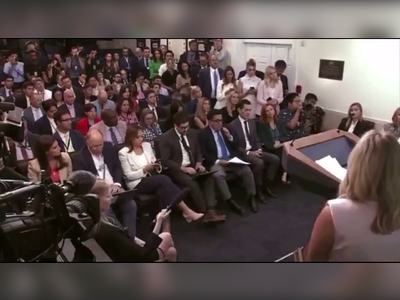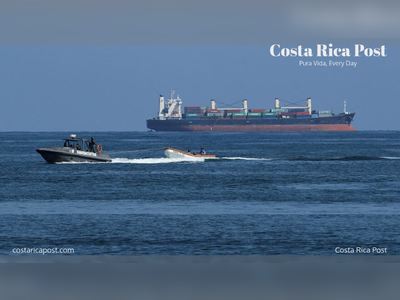Tragic Collision: Motorcyclist Perishes in Crash with Vehicle Transport Truck on Bernardo Soto Highway
A fatal accident at the Coyol exit in Alajuela highlights the perils of poor road infrastructure and poses questions on traffic safety measures.
In a harrowing turn of events that underscores the dangers lurking on Costa Rica's roads, a fatal accident claimed the life of a motorcyclist on the morning of Wednesday, December 18th.
The collision occurred on the Bernardo Soto Highway, a critical artery traversing through Alajuela province, when a vehicle transport truck collided with a motorcycle at the Coyol exit ramp.
Preliminary reports paint a grim picture: as the truck attempted a right turn to ascend the exit ramp, the motorcyclist — caught unaware by the sudden movement — found no time to halt, leading to an inevitable and tragic crash.
Despite the prompt arrival of emergency responders, the motorcyclist had already succumbed to the injuries, marking another somber statistic in the ongoing saga of road safety challenges facing the nation.
The immediate aftermath of the accident saw the closure of the highway section extending from the entry point of the Bernardo Soto freeway to the ramp itself.
This closure, pending the official proceedings of the Judicial Investigation Agency (OIJ) who is tasked with formalizing the scene and performing the requisite body retrieval, has added to the mounting frustrations faced by regular commuters.
The collision raises fresh concerns regarding the state of road infrastructure and safety protocols, especially in areas known for heavy vehicular movement and complex traffic dynamics.
While the identity of the deceased remains undisclosed, the incident serves as a poignant reminder of the need for vigilance and enhanced safety measures on such heavily trafficked thoroughfares.
Navigating the complexities of traffic management on a rapidly expanding network of roads necessitates robust strategies and the implementation of effective infrastructure solutions.
As communities grapple with these recurring tragedies, the call for comprehensive assessments of road conditions and the improvement of traffic regulation remains pressing.
Silvia Coto, a journalist specializing in accident and judicial reporting with Grupo Nación since 2010, highlights the intrinsic links between coverage transparency and public safety discourse.
Only by ensuring an open but respectful platform for dialogue — safeguarded from anonymity-induced distortions — can constructive discussion thrive, she asserts.
The readership's engagement, limited to verified subscribers within a controlled commenting environment, fosters not only clarity but also accountability.
Such measures, Coto suggests, are pivotal in directing the public discourse towards meaningful outcomes and, ultimately, safer roads for all.
The collision occurred on the Bernardo Soto Highway, a critical artery traversing through Alajuela province, when a vehicle transport truck collided with a motorcycle at the Coyol exit ramp.
Preliminary reports paint a grim picture: as the truck attempted a right turn to ascend the exit ramp, the motorcyclist — caught unaware by the sudden movement — found no time to halt, leading to an inevitable and tragic crash.
Despite the prompt arrival of emergency responders, the motorcyclist had already succumbed to the injuries, marking another somber statistic in the ongoing saga of road safety challenges facing the nation.
The immediate aftermath of the accident saw the closure of the highway section extending from the entry point of the Bernardo Soto freeway to the ramp itself.
This closure, pending the official proceedings of the Judicial Investigation Agency (OIJ) who is tasked with formalizing the scene and performing the requisite body retrieval, has added to the mounting frustrations faced by regular commuters.
The collision raises fresh concerns regarding the state of road infrastructure and safety protocols, especially in areas known for heavy vehicular movement and complex traffic dynamics.
While the identity of the deceased remains undisclosed, the incident serves as a poignant reminder of the need for vigilance and enhanced safety measures on such heavily trafficked thoroughfares.
Navigating the complexities of traffic management on a rapidly expanding network of roads necessitates robust strategies and the implementation of effective infrastructure solutions.
As communities grapple with these recurring tragedies, the call for comprehensive assessments of road conditions and the improvement of traffic regulation remains pressing.
Silvia Coto, a journalist specializing in accident and judicial reporting with Grupo Nación since 2010, highlights the intrinsic links between coverage transparency and public safety discourse.
Only by ensuring an open but respectful platform for dialogue — safeguarded from anonymity-induced distortions — can constructive discussion thrive, she asserts.
The readership's engagement, limited to verified subscribers within a controlled commenting environment, fosters not only clarity but also accountability.
Such measures, Coto suggests, are pivotal in directing the public discourse towards meaningful outcomes and, ultimately, safer roads for all.








